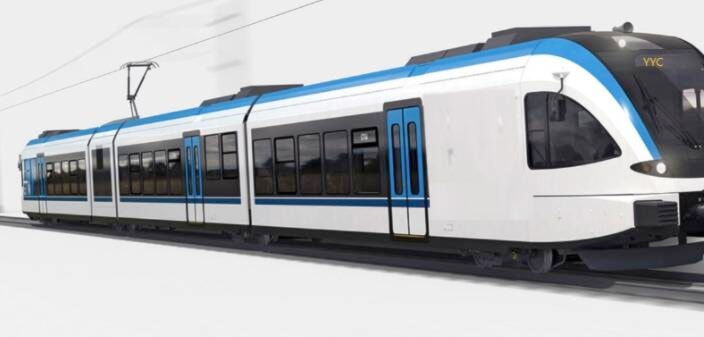A new regional rail line proposal that would connect communities throughout central Alberta is gaining tracks in central Alberta.
Alberta Regional Rail is currently in the process of presenting their project, an integrated travel system for residents and visitors to councils and communities within the Calgary to Edmonton corridor, to councils in Alberta.
“We have received letters of support from local economic development groups and local councils throughout Alberta. We have asked for feedback including, preferred rail overpass, train station as well as how this project fits within the community’s existing sustainability and downtown redevelopment plans,” said Vern Raincock, director with Alberta Regional Rail.
The project would link 23 communities and counties along the 307 km corridor between Calgary and Edmonton, including Lacombe, Blackfalds, Ponoka, Maskwacis, Wetaskwin and Leduc which could economical and societal benefits to the communities.
“The right of way exists, not only construction jobs will be generated, more importantly, local service and manufacturing jobs will be generated as soon as the travel system is built out.”
He said they have recently been approached by a tie manufacturer who may invest $12 million into a new railway tie plant.
“Albertans will be employed at train stations, as train operators, and provide track maintenance services by the railway. Downtown redevelopment projects on the books for decades will be able to move forward, increasing the tax bases for each community along the journey. There will be mechanical shops to repair and clean the trains.”
The route has sparked nostalgia over the Budd Dayliners. Started in 1956, are two of the more well known passenger lines that used to run through the central Alberta corridor.
The Dayliners continued on the CP Calgary-Edmonton corridor until Sept. 6, 1985 when the service was cancelled, due to financial losses and at-grade collisions after 94 years of passenger service. When the service came to an end stops along the line were down to Didsbury, Olds, Innisfail, Red Deer and Wetaskiwin.
Like the Dayliners, the Alberta Regional Rail could open up communities to Albertans as well, not just tourists.
“Eighty three per cent of tourism dollars in Alberta are generated by Albertans. Revenues from Albertans within Alberta will increase, in part from induced demand,” said Raincock. “Check out a farmers market in Lacombe in the morning and return to Blackfalds in time to cook lunch. Visitors from Edmonton or Calgary can hop on a train, get off in Lacombe to take in the sights of the historic downtown and indulge in award winning Blindman Brewery & Cilantro and Chive culinary delights before heading home. Hop on a train in Lacombe and take in the Ponoka Stampede or take in a Junior A game between cities or Battle of Alberta.”
“Twenty per cent of Albertans do not have a driver’s license. Some by choice, some due to their age, some due to health and many due to the high cost of passenger vehicle ownership. There is little or no affordable mobility option for over 1 million Albertans.
“(It would allow) families to meet, seniors attend medical specialist appointments in Edmonton or Calgary and students to elect to stay home with their family to save money while taking post graduate classes. Extended families may be able to get together more often in the winter when the roads are impassable due to a blizzard.”
He said that the initial reaction and councils have been very encouraging.
“Planning resources are being offered to ensure each community benefits from the travel system. In December, our group received calls from transportation economists in Europe, United States and Asia asking only one thing, how can we help?”
“In fact we entered a third conference call since the New Year with Economists in France, Texas and Canada to peer review our economic gravity model,” said Raincock. “The gravity model plays an integral role in state-of-practice urban transportation planning models, trip distribution (which is) the allocation of trips to specific zonal destination, is accomplished using a model that accounts for the relative attractiveness of zones as destinations and expresses distance as a generalized cost.”
Presentations have been made in Blackfalds and Ponoka in January and there will a presentation to Lacombe council on Feb. 14, 2022.
